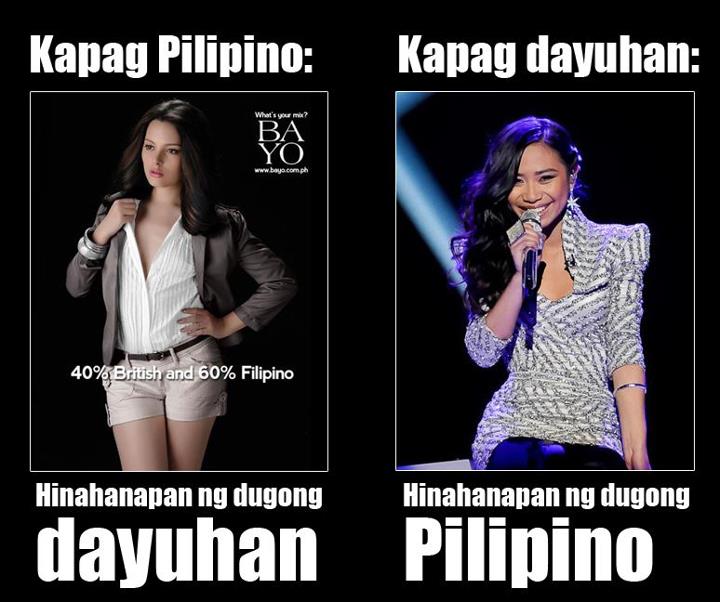Filtered By: Scitech
SciTech
What is a Filipino? Looking at our DNA for the answers
By Dr. Michael Purugganan, NYU Dean for Science
 What's your mix? Remember that infamous advertising campaign a few months ago, which raised the ire of the Philippine public? Extolling the virtues of Filipinos who were "mixed" —part-Filipino, part something else— it was really meant to be a celebration of diversity, but many saw it as praising the part-foreign among us.
What's your mix? Remember that infamous advertising campaign a few months ago, which raised the ire of the Philippine public? Extolling the virtues of Filipinos who were "mixed" —part-Filipino, part something else— it was really meant to be a celebration of diversity, but many saw it as praising the part-foreign among us. At that time, someone asked me what I thought, and I remember being puzzled. You see, genetically I have no idea what it means to be "Filipino". What is 'Filipino'? We are proud of our heritage at the rim of East Asia, the meeting point of the many Asian groups, as well as Europeans from Spain. Our culture even 100 years ago was already a mix —of Malay, Chinese, Hindu, Arab, Polynesian and Spanish, with maybe some English, Japanese and African thrown in. And it shows up in our genes.
The genome is the complete set of DNA that carries the instructions on how to make a living being. Genomes change and these changes tell us how life evolves. The genome sequence —the strings of the 4 letters of the DNA code in our bodies— provides the instructions on how to build the organism, and as they evolve the organism also evolves, sometimes into new species. In the last few years, genome technologies have exploded to the point that it has become routine to sequence my genome or your genome or the genome of many different species looks like.
Looking inward
I was curious about myself. I wanted to see who I was (and as a Filipino who we are) by looking into my own genetic code. I did not sequence my own genome but by using a 500,000 "SNP chip", I was able to get a genetic readout of who I was by looking at a part of my entire genome.
And here you find my mix. I had European and Asian genes in the nucleus, my Y-chromosome was likely Chinese while my mitochondrial DNA probably came from Taiwan.
And here lies the answer to that infamous question.
'We are all mixes' We are all mixes, and I think every Filipino who is genetically tested will show up as a mix. We are products of what we evolutionary genomicists call genetic admixture, the result of several thousand years of mixing in our island archipelago at the edge of the Pacific. We were always getting genes from everyone who came to our shores. We are, in a genetic sense, a truly global people.
The Filipino story
The story of Filipinos, where we came from and how we came to be who we are as a people, is partly written in our DNA. The new tools of genomics are revolutionizing the study of human history, by tracing our genetic ancestors and seeing what makes up our genomes. It took a worldwide effort 10 years and nearly P120 B to sequence the human genome. Today, I sit at my lab a few feet away at New York University from a sequencing machine that can do it in 10 days for about P120,000. The Filipino genome
It is time we sequence the Filipino genome. A Filipino Genome Diversity Project can be launched at the newly established Philippine Genome Center, and I think for the price of a small house we can begin to unlock the secrets of our genes.
The ability to sequence our genomes will revolutionize not only how we see ourselves, but how we treat our diseases. Genetic testing has been widespread over the last few decades, and we can now reliably test for increased risk in many genetic diseases. Doctors are now routinely sequencing the genomes of cancer cells from their patients to figure out quickly what has gone wrong and help in developing better ways to cure them.
Any volunteers? — TJD, GMA News
 Dr. Michael D. Purugganan is the Dean for Science at New York University, the Dorothy Schiff Professor of Genomics, and co-director of the Center for Genomics and Systems Biology at NYU Abu Dhabi. He is a leader in the field of evolutionary and ecological genomics, and his work focuses on identifying the molecular basis for evolutionary adaptations that occur in nature.
Dr. Michael D. Purugganan is the Dean for Science at New York University, the Dorothy Schiff Professor of Genomics, and co-director of the Center for Genomics and Systems Biology at NYU Abu Dhabi. He is a leader in the field of evolutionary and ecological genomics, and his work focuses on identifying the molecular basis for evolutionary adaptations that occur in nature.
Dr. Purugganan will be featured in a one-on-one interview on News to Go on GMA News TV Channel 11 at 9:30 a.m. on January 28 (Philippine Time).
More Videos
Most Popular



